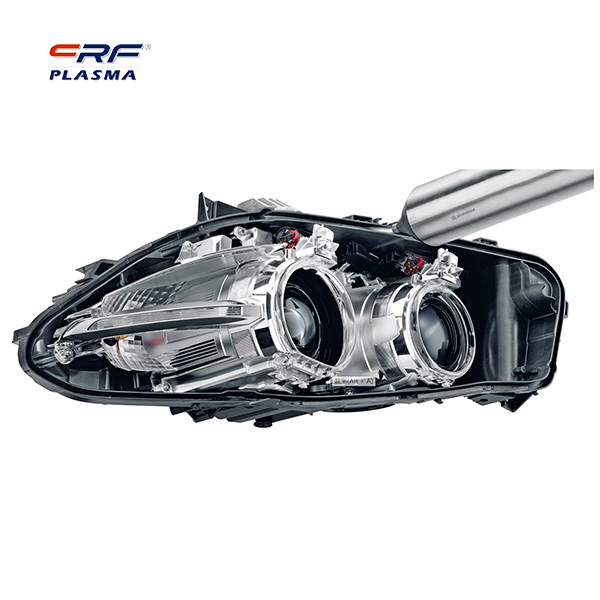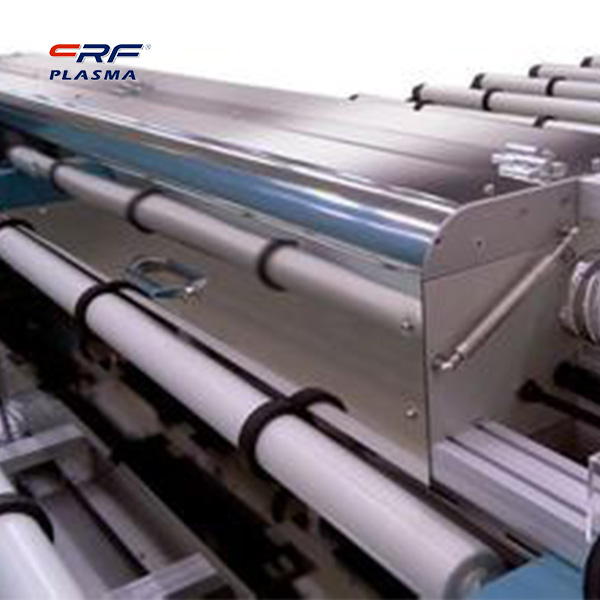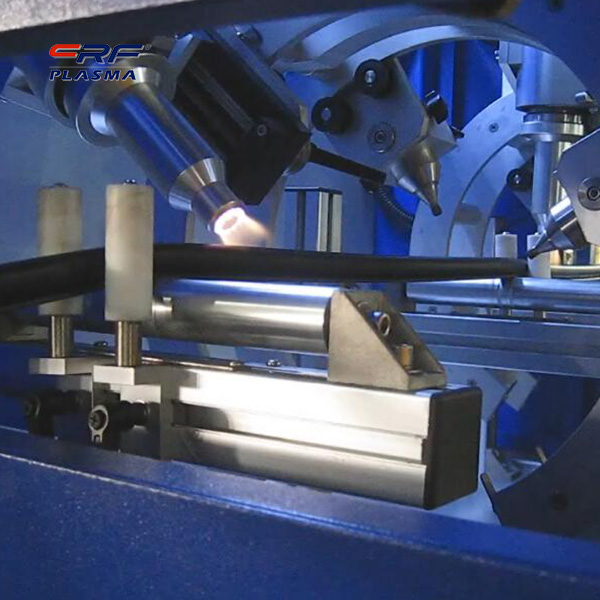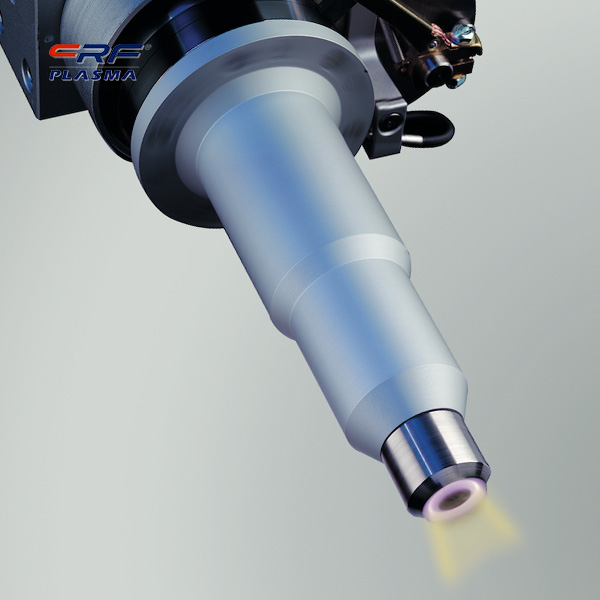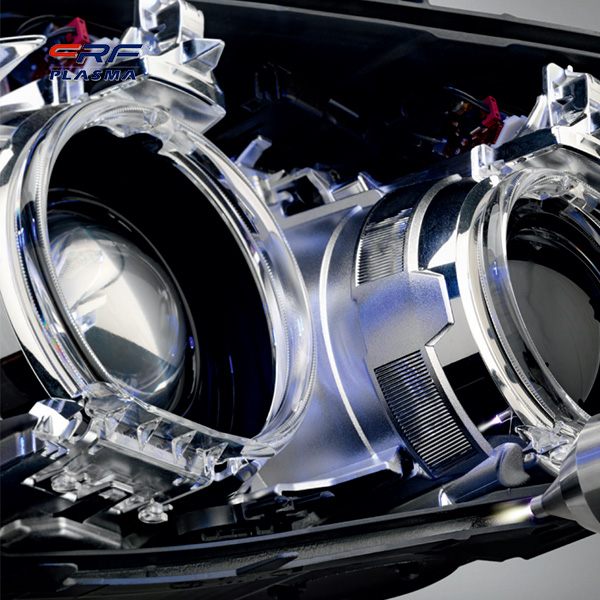
Welcome to Shenzhen Sing Fung Intelligent Manufacturing Co., Ltd.
E-mail:shaobo@sfi-crf.com
Introduction to the functional cleaning principle of plasma vacuum plasma cleaning machine plasma surface treatment equipment
- Categories:Company Dynamics
- Author:Plasma cleaning machine-CRF plasma plasma equipment-plasma surface treatment machine manufacturer-chengfeng intelligent manufacturing
- Origin:
- Time of issue:2022-03-13
- Views:
(Summary description)Introduction to the functional cleaning principle of plasma vacuum plasma cleaning machine plasma surface treatment equipment: Plasma vacuum plasma cleaners can increase surface energy by changing the surface of materials, bonding, printing and wetting. At the same time, plasma waterproof coating products can also be provided. In fact, almost any material can be plasma treated. The pollutants treated by plasma surface treatment equipment are generally invisible and belong to the nanometer scale. These contaminants affect the ability of objects to interact with other substances such as glue or ink. The surface of an object is treated with plasma to remove organic matter. Plasma surface treatment equipment can improve adhesive or solder adhesion and print reliability. This process is suitable for bright plastic and rubber, and can be directly printed and bonded after impurities are removed. Plasma vacuum plasma cleaning machine can be widely used in the surface activation modification of materials to improve its bonding properties. The following introduces the cleaning principle of plasma vacuum plasma cleaning machine: 1. The cleaned workpiece is sent into the cavity of the vacuum plasma cleaning machine and fixed, the operating device is started, and the exhaust is started, so that the vacuum degree of the vacuum chamber reaches the standard 10 Pa, and the general discharge time is about tens of seconds. Any method of surface modification without chemical treatment of plasma is called dry etching. During the plasma etching process, all plasma cleaned products are dry etched. Plasma etching is similar to plasma cleaning. Plasma etching is used to remove impurities from the treated surface layer. 2. Introduce the gas passed through the plasma vacuum plasma cleaner into the vacuum chamber, and keep the inner cavity pressure stable. Depending on the cleaning material, oxygen, argon, hydrogen, nitrogen, carbon tetrafluoride and other gases can be used respectively. Oxygen-plasma treatment is one of the commonly used dry etching methods. Oxygen (sometimes mixed with argon) is used to treat aluminum, stainless steel, glass, plastic and ceramic surfaces. 3. The high-frequency voltage is applied between the electrodes in the vacuum chamber and the grounding equipment of the plasma vacuum plasma cleaning machine, so that the gas is broken down, and a glow discharge occurs to generate plasma, and the treated workpiece completely covers the plasma generated in the vacuum chamber. Start the cleaning operation. Generally, the duration of the cleaning process varies from tens of seconds to several minutes. Etchers allow plasma to etch printed circuit boards, giving them better bonding properties such as adhesion and decoration. 4. After the cleaning is completed, cut off the power supply, and discharge the gas and vaporize the dirt through the vacuum pump. Several functions commonly used in plasma surface treatment equipment: 1. Activating metal: Although the metal is activated, the activation process of plasma surface treatment equipment is very unstable, so the effective time is very short. For example, after the metal is activated, subsequent treatments (bonding, painting, etc.) must be completed within minutes or hours, otherwise the surface will quickly combine with dirt from the surrounding air. 2. Activated modified plastics: Plastics such as polypropylene and PE are all non-polar structures. That said, these plastics must be pretreated before painting and bonding. Dry oil-free compressed air is often used as process gas. Through the effect test, the workpiece treated and untreated by the plasma surface treatment equipment can be immersed in water (polar solution), and the activation effect is impressive. For the untreated portion, water droplets of normal shape are formed. The machined part of the machined part will be fully saturated with water. 3. Glass and ceramics can also work: Glass and ceramic bottles have similar properties to metals, have a short effective time, and usually use compressed air as the process gas. Enhance its ability to print or bond. The purpose of plasma surface treatment equipment cleaning is to remove surface organic contaminants. Plasma treatment of product surfaces, using adhesives or printing inks. Often used to surface modify Teflon or plastic plasma, it can actually change the surface of the material so that it retains free radicals and binds with glue or ink.
Introduction to the functional cleaning principle of plasma vacuum plasma cleaning machine plasma surface treatment equipment
(Summary description)Introduction to the functional cleaning principle of plasma vacuum plasma cleaning machine plasma surface treatment equipment:
Plasma vacuum plasma cleaners can increase surface energy by changing the surface of materials, bonding, printing and wetting. At the same time, plasma waterproof coating products can also be provided. In fact, almost any material can be plasma treated.
The pollutants treated by plasma surface treatment equipment are generally invisible and belong to the nanometer scale. These contaminants affect the ability of objects to interact with other substances such as glue or ink. The surface of an object is treated with plasma to remove organic matter. Plasma surface treatment equipment can improve adhesive or solder adhesion and print reliability. This process is suitable for bright plastic and rubber, and can be directly printed and bonded after impurities are removed.
Plasma vacuum plasma cleaning machine can be widely used in the surface activation modification of materials to improve its bonding properties. The following introduces the cleaning principle of plasma vacuum plasma cleaning machine:
1. The cleaned workpiece is sent into the cavity of the vacuum plasma cleaning machine and fixed, the operating device is started, and the exhaust is started, so that the vacuum degree of the vacuum chamber reaches the standard 10 Pa, and the general discharge time is about tens of seconds. Any method of surface modification without chemical treatment of plasma is called dry etching. During the plasma etching process, all plasma cleaned products are dry etched. Plasma etching is similar to plasma cleaning. Plasma etching is used to remove impurities from the treated surface layer.
2. Introduce the gas passed through the plasma vacuum plasma cleaner into the vacuum chamber, and keep the inner cavity pressure stable. Depending on the cleaning material, oxygen, argon, hydrogen, nitrogen, carbon tetrafluoride and other gases can be used respectively. Oxygen-plasma treatment is one of the commonly used dry etching methods. Oxygen (sometimes mixed with argon) is used to treat aluminum, stainless steel, glass, plastic and ceramic surfaces.
3. The high-frequency voltage is applied between the electrodes in the vacuum chamber and the grounding equipment of the plasma vacuum plasma cleaning machine, so that the gas is broken down, and a glow discharge occurs to generate plasma, and the treated workpiece completely covers the plasma generated in the vacuum chamber. Start the cleaning operation. Generally, the duration of the cleaning process varies from tens of seconds to several minutes. Etchers allow plasma to etch printed circuit boards, giving them better bonding properties such as adhesion and decoration.
4. After the cleaning is completed, cut off the power supply, and discharge the gas and vaporize the dirt through the vacuum pump.
Several functions commonly used in plasma surface treatment equipment:
1. Activating metal:
Although the metal is activated, the activation process of plasma surface treatment equipment is very unstable, so the effective time is very short. For example, after the metal is activated, subsequent treatments (bonding, painting, etc.) must be completed within minutes or hours, otherwise the surface will quickly combine with dirt from the surrounding air.
2. Activated modified plastics:
Plastics such as polypropylene and PE are all non-polar structures. That said, these plastics must be pretreated before painting and bonding. Dry oil-free compressed air is often used as process gas.
Through the effect test, the workpiece treated and untreated by the plasma surface treatment equipment can be immersed in water (polar solution), and the activation effect is impressive. For the untreated portion, water droplets of normal shape are formed. The machined part of the machined part will be fully saturated with water.
3. Glass and ceramics can also work:
Glass and ceramic bottles have similar properties to metals, have a short effective time, and usually use compressed air as the process gas. Enhance its ability to print or bond. The purpose of plasma surface treatment equipment cleaning is to remove surface organic contaminants. Plasma treatment of product surfaces, using adhesives or printing inks. Often used to surface modify Teflon or plastic plasma, it can actually change the surface of the material so that it retains free radicals and binds with glue or ink.
- Categories:Company Dynamics
- Author:Plasma cleaning machine-CRF plasma plasma equipment-plasma surface treatment machine manufacturer-chengfeng intelligent manufacturing
- Origin:
- Time of issue:2022-03-13 10:44
- Views:
Introduction to the functional cleaning principle of plasma vacuum plasma cleaning machine plasma surface treatment equipment:
Plasma vacuum plasma cleaners can increase surface energy by changing the surface of materials, bonding, printing and wetting. At the same time, plasma waterproof coating products can also be provided. In fact, almost any material can be plasma treated.
The pollutants treated by plasma surface treatment equipment are generally invisible and belong to the nanometer scale. These contaminants affect the ability of objects to interact with other substances such as glue or ink. The surface of an object is treated with plasma to remove organic matter. Plasma surface treatment equipment can improve adhesive or solder adhesion and print reliability. This process is suitable for bright plastic and rubber, and can be directly printed and bonded after impurities are removed.
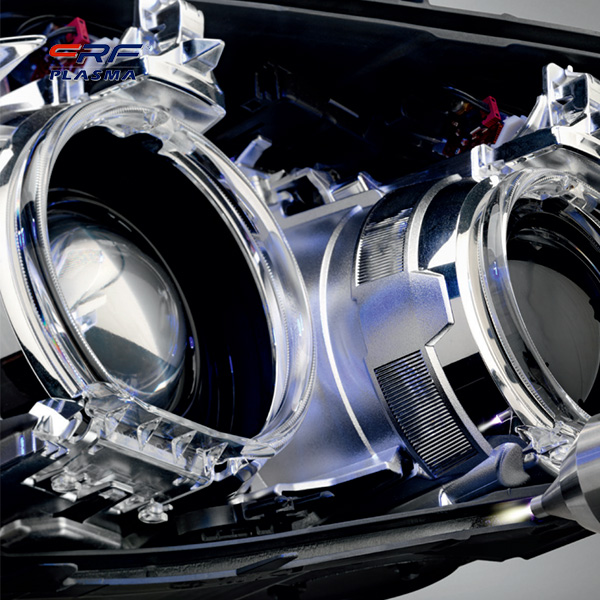 Plasma vacuum plasma cleaning machine can be widely used in the surface activation modification of materials to improve its bonding properties. The following introduces the cleaning principle of plasma vacuum plasma cleaning machine:
Plasma vacuum plasma cleaning machine can be widely used in the surface activation modification of materials to improve its bonding properties. The following introduces the cleaning principle of plasma vacuum plasma cleaning machine:
1. The cleaned workpiece is sent into the cavity of the vacuum plasma cleaning machine and fixed, the operating device is started, and the exhaust is started, so that the vacuum degree of the vacuum chamber reaches the standard 10 Pa, and the general discharge time is about tens of seconds. Any method of surface modification without chemical treatment of plasma is called dry etching. During the plasma etching process, all plasma cleaned products are dry etched. Plasma etching is similar to plasma cleaning. Plasma etching is used to remove impurities from the treated surface layer.
2. Introduce the gas passed through the plasma vacuum plasma cleaner into the vacuum chamber, and keep the inner cavity pressure stable. Depending on the cleaning material, oxygen, argon, hydrogen, nitrogen, carbon tetrafluoride and other gases can be used respectively. Oxygen-plasma treatment is one of the commonly used dry etching methods. Oxygen (sometimes mixed with argon) is used to treat aluminum, stainless steel, glass, plastic and ceramic surfaces.
3. The high-frequency voltage is applied between the electrodes in the vacuum chamber and the grounding equipment of the plasma vacuum plasma cleaning machine, so that the gas is broken down, and a glow discharge occurs to generate plasma, and the treated workpiece completely covers the plasma generated in the vacuum chamber. Start the cleaning operation. Generally, the duration of the cleaning process varies from tens of seconds to several minutes. Etchers allow plasma to etch printed circuit boards, giving them better bonding properties such as adhesion and decoration.
4. After the cleaning is completed, cut off the power supply, and discharge the gas and vaporize the dirt through the vacuum pump.
Several functions commonly used in plasma surface treatment equipment:
1. Activating metal:
Although the metal is activated, the activation process of plasma surface treatment equipment is very unstable, so the effective time is very short. For example, after the metal is activated, subsequent treatments (bonding, painting, etc.) must be completed within minutes or hours, otherwise the surface will quickly combine with dirt from the surrounding air.
2. Activated modified plastics:
Plastics such as polypropylene and PE are all non-polar structures. That said, these plastics must be pretreated before painting and bonding. Dry oil-free compressed air is often used as process gas.
Through the effect test, the workpiece treated and untreated by the plasma surface treatment equipment can be immersed in water (polar solution), and the activation effect is impressive. For the untreated portion, water droplets of normal shape are formed. The machined part of the machined part will be fully saturated with water.
3. Glass and ceramics can also work:
Glass and ceramic bottles have similar properties to metals, have a short effective time, and usually use compressed air as the process gas. Enhance its ability to print or bond. The purpose of plasma surface treatment equipment cleaning is to remove surface organic contaminants. Plasma treatment of product surfaces, using adhesives or printing inks. Often used to surface modify Teflon or plastic plasma, it can actually change the surface of the material so that it retains free radicals and binds with glue or ink.
Scan the QR code to read on your phone

TEL:0755-3367 3020 / 0755-3367 3019

E-mail:sales-sfi@sfi-crf.com

ADD:Mabao Industrial Zone, Huangpu, Baoan District, Shenzhen




